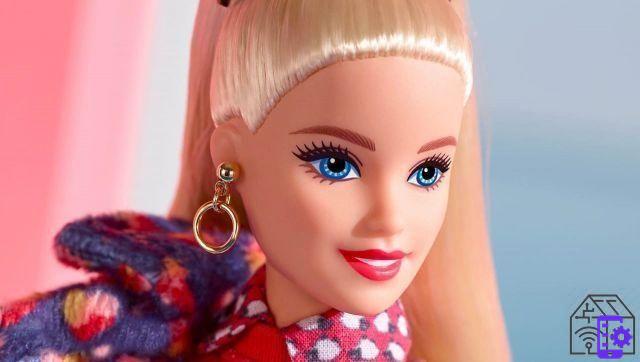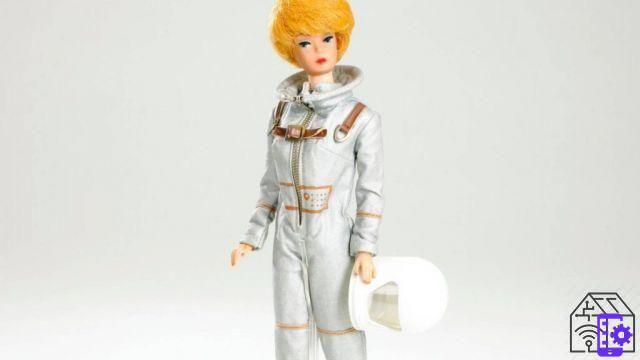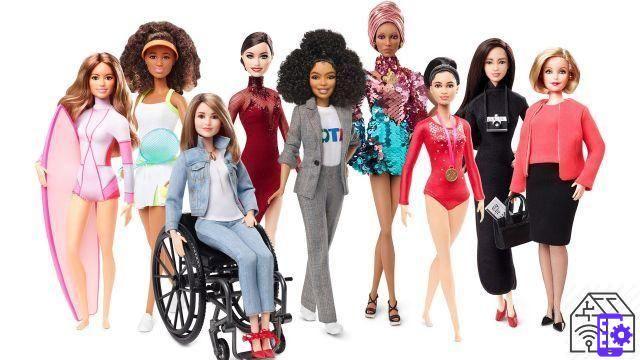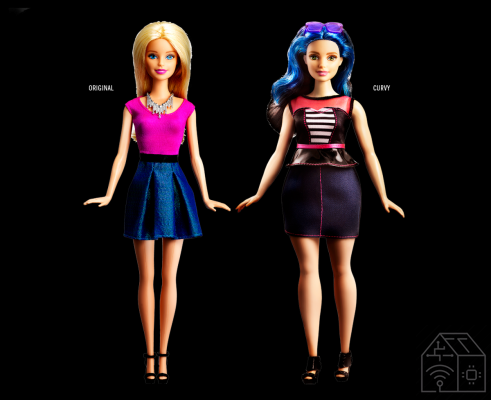
During our “How has it changed” column we followed the evolution of some of the most iconic objects of our daily life: the telephone, the scale and even the washing machine. Today we decided to do the same, retracing the history of Barbie, the doll that accompanied thousands of girls all over the world during their childhood. And as much as it may always seem the same to you, Barbie has changed a lot over the decades, revealing some of the greatest socio-cultural evolutions of our time. Let's find out how.
Barbie, a story spanning over 60 years
It may seem strange to you, yet - like some of the best inventions ever - Barbie was born by accident. Almost. In the late XNUMXs, in a small Wisconsin town, Ruth Handler he had a far-sighted intuition as he watched his daughter play with paper dolls. The little girl, in fact, used to give her dolls adult roles, so as to make them the protagonists of scenes of everyday life. An almost impossible thing for the time, given that the vast majority of toys for girls represented babies to be cared for and raised. But it was thus that Ruth, realizing the needs of her child, had the brilliant idea of a versatile doll, which she could represent. an adult woman - with all its annexes and connections -.
Strengthened by her idea, the woman decided to propose the project to her husband Elliot, co-founder of the historic toy house Mattel. Initially the man proved reluctant, but the success in Germany of a doll similar to the one designed by his wife, Picture Lilli, convinced him to believe in this idea. Thus it was that on March 9, 1959 it made its debut on the market Barbara Millicent Roberts, aka Barbie, the doll that would forever revolutionize the history of toys. Her name was a clear celebration of Ruth's daughter, who had contributed her way to this incredible project.
Just under 30 inches tall, the first Barbie in history clearly featured a adult body and flawless make-up. And not only. The doll arrived on the market wearing it a zebra costume, sandals, sunglasses and earrings. That is, with a series of accessories that had never been seen before on a doll, so much so that some sellers even refused to sell it. Ruth Handler's idea, on the other hand, proved more than brilliant. In the first year of production Mattel managed to sell well 350.000 specimens. A notable success, which revealed how the girls appreciated more the doll in the blonde version rather than the brunette. Which explains why Barbie always appeared later with light hair.
One shape, a thousand personalities
Ruth Handler's intuition was a real revolution for thefemale empowerment. The idea behind the launch of the Barbie, in fact, was to "show the girls that they could become whoever they wanted". And so, in the years following its introduction on the market, Mattel began to produce the doll in the most varied features. Modella, teacher, nurse, dancer and flight attendant: Throughout her life, Barbie has embarked on these careers and many more, proving that women can do whatever they want. Even space travel.

In 1965, for example, the well-known toy house launched the first on the market Barbie astronaut of history, thus anticipating the mission of Neil Armstrong, who set his first foot on the moon in 1969. For its part, Mattel had anticipated this American success, imagining that his doll could be the first to explore the Earth's satellite. In this way, Barbie anticipates the possibility for women to enter professions that have always been openly masculine. Not surprisingly, the doll has always promoted the equality between the sexes in the world of work, revealing a career that can truly be the envy of anyone.
In 1989 Barbie was nominated Unicef Ambassador, and in 1992 the Mattel doll took on the role of one White House candidate for the first time in history. But that is not all. A few years later, she officially joined the Major League Baseball, proving once again to the whole world how women can truly enter any professional and non-professional sector. A thousand personalities, therefore, for a doll that has kept the same appearance - or almost - over the decades. Of course, Barbie's features have changed: her gaze has gone from oblique to frontal, her bust is slightly elongated, her breasts reduced and her hairstyle has adapted to the fashions of the time. But what she matters is that the doll has remained true to her origins: "show the girls that they could become whoever they wanted".

A doll that aims for inclusiveness
When it comes to the history of Barbie, what matters is not only the evolution of her aesthetic appearance, but also what this evolution represents. For many years, in fact, the criticism leveled at Mattel's doll was that of represent an absolutely unreal woman. Too thin and perfect, according to the International Journal of Eating Disorders, she would represent a 1.75 tall person with 99 cm of bust, 53 of waistline and 83 of hips. In this regard, some experts in the sector have even stated that, if she really existed, a woman of this type would have many health problems. Including an irregular menstrual cycle. Or the difficulty in dembulating, as his legs are more than 50% longer than his arms.
In short, Ruth Handler's idea of representing a real woman in a toy for girls does not seem to have been fully respected. In the nineties, in fact, Erica Rand - author of Barbie's Queer Accessories - has harshly criticized Mattel for not representing the best ethnicities of women around the world. “Simply changing the color of the white Barbie's skin without changing its body and features is the same as saying that the 'real' Barbie is the white one." So she commented on the author, that she has done nothing but follow a series of criticisms against the well-known toy house. Fortunately, Mattel chose to listen to what the women who have always loved Barbie had to say.

Thus was born the project "Project Dawn"And the line"Fashionistas“, Which offers Barbie models more similar to reality. 7 skin tones, 24 different hairstyles and 22 eye colors. To which 3 different silhouettes must be added: curvy, looking e tall. In this way, Mattel was able to represent all possible and imaginable types of women in a doll. Indeed, by elevating inclusiveness to production value, the toy company has decided to launch some on the market models with disabilities. Among these, the Barbie with the wheelchair it seems to have been the most purchased by doll lovers, young and old. Proof that Barbie is more than just a toy. She is the tool through which girls and boys learn to interact with the world around them. And that hasn't changed at all over the years.


























